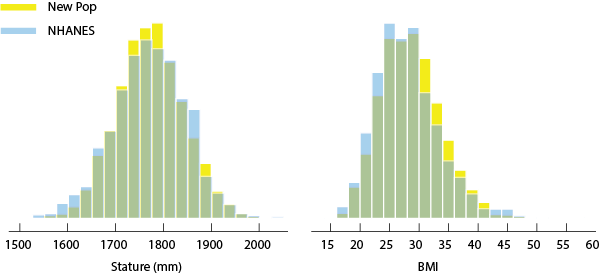Anthropometric measures that accurately represent the target user population are essential to effective designing for human variability, yet the available anthropometric data are drawn from populations that are substantially dissimilar from the target populations for most products and environments. Many designs for civilians are assessed using military anthropometric data, for example, because the only available data with sufficient detail were gathered from soldiers. Recent studies have collected detailed information from civilians, but these populations are also not representative of typical user populations. This paper presents a new statistical method for applying the available anthropometric data to estimate distributions of anthropometric data for a target population. For many design problems, the target population can be characterized by overall demographic information, such as the gender ratio, age distribution, nationality, and ethnicity. Principal component analysis and linear regression are used to create statistical models that can draw on information from two or more databases to estimate values for a large range of anthropometric variables. The approach matches the race/ethnicity distribution of the target user population and incorporates a stochastic component so that all relevant variance is retained. Finally, it generates populations of virtual users rather than summary statistics for individual variables. Summary statistics from the virtual populations are shown to be reasonable approximations for the actual measures. This work has application to a wide range of design problems, including the design of workspaces, vehicles, and medical devices.

